Keep your binoculars at the ready!
The Chobe River region is a veritable Garden of Eden for birdwatchers, allowing you to tick off tons of new and old favourites. We have made a list of our Top 10 species to spot.
Whether you consider yourself a birder or not, you’ll be truly delighted upon setting sail on one of our legendary houseboats or settling in for a birdwatching excursion if you’ve opted to stay on dry land at Ichingo Chobe River Lodge.
Marvel at an incredible 450 plus diverse bird species against the fiery backdrop of a stunning sunrise or sunset, or simply against the painted blue of the day with the ellies or hippos flopping about in the water beneath.
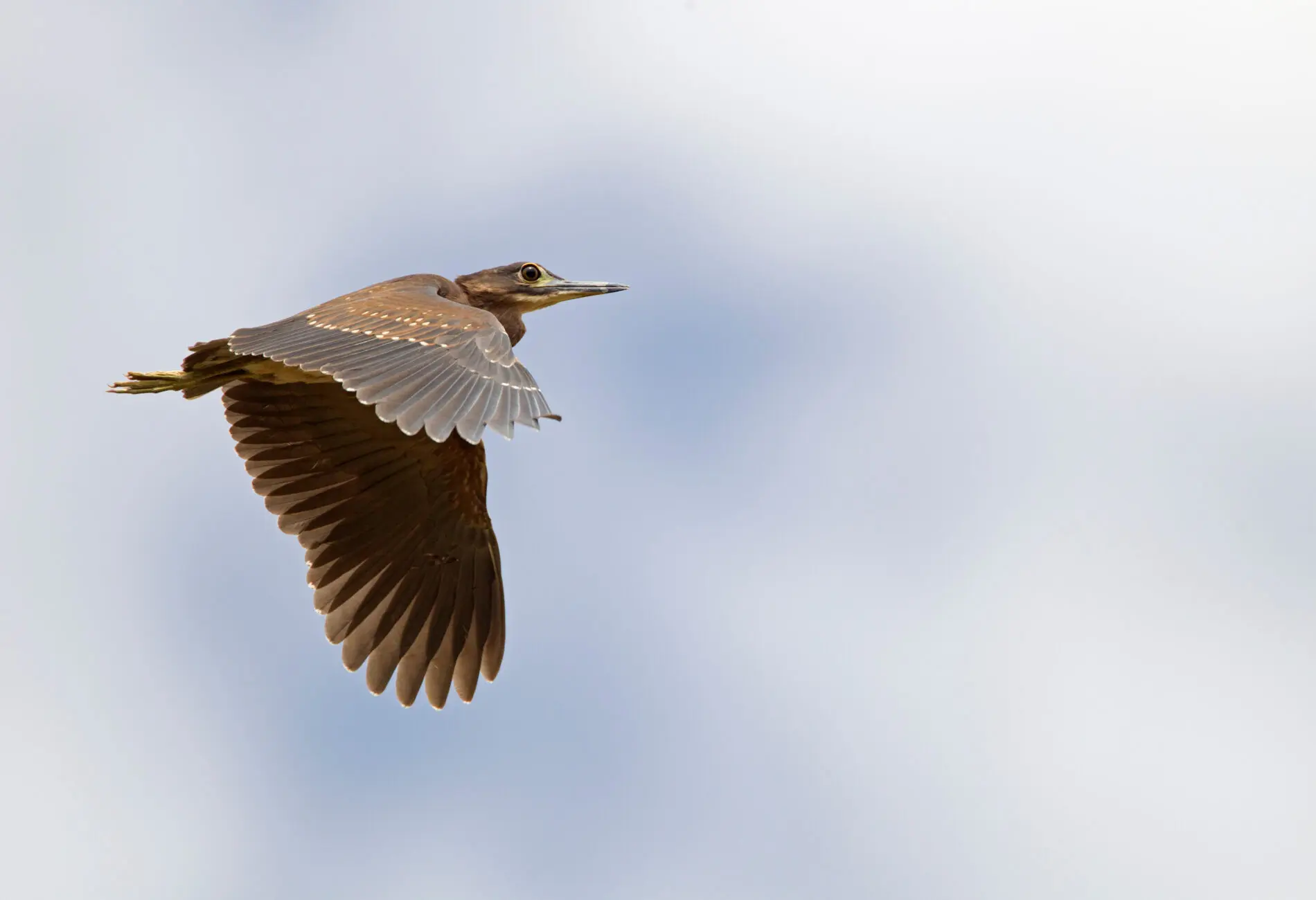
White backed Night Heron
Night owls of the human species, this one is for you. The White Backed Night Heron is, as its name suggests, mostly a nocturnal creature. The bird is notoriously shy so count yourself lucky if you spot one! Keep an eye out at twilight when it’s foraging for an early dinner or during the day when it’s most likely to be found hidden in more secluded trees lining the river.
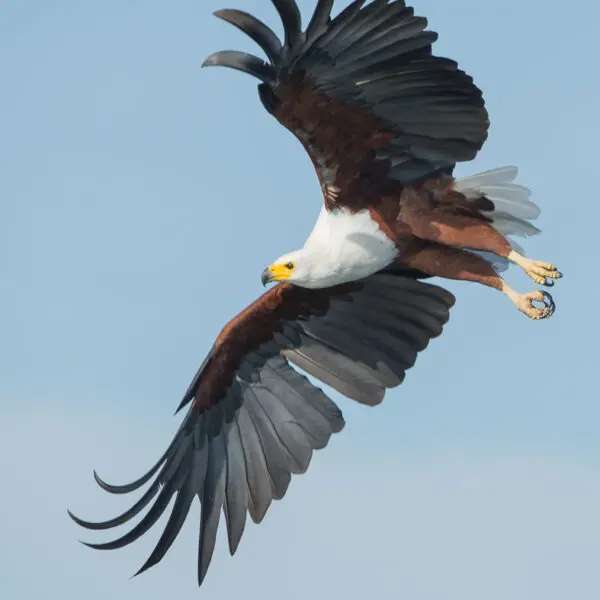
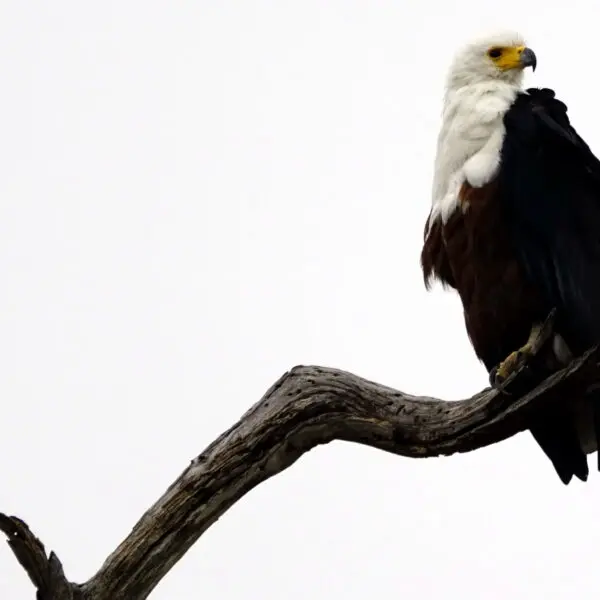
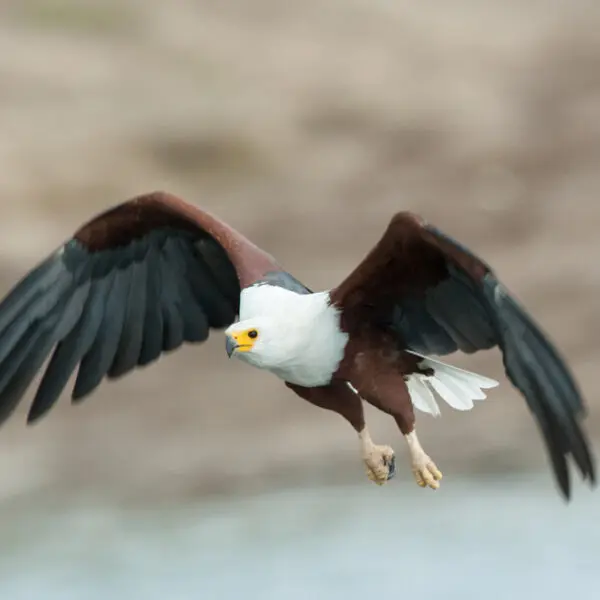
The African Fish Eagle
Perhaps the most distinctive sound you’ll remember long after you’ve returned home, the African Fish Eagle is a delight to see and hear. Although you can spot them throughout the continent, the Chobe River is still a favourite place to see them.
Top tip: Keep your eyes on those riverside trees – their white chest and head is more easily spotted here.
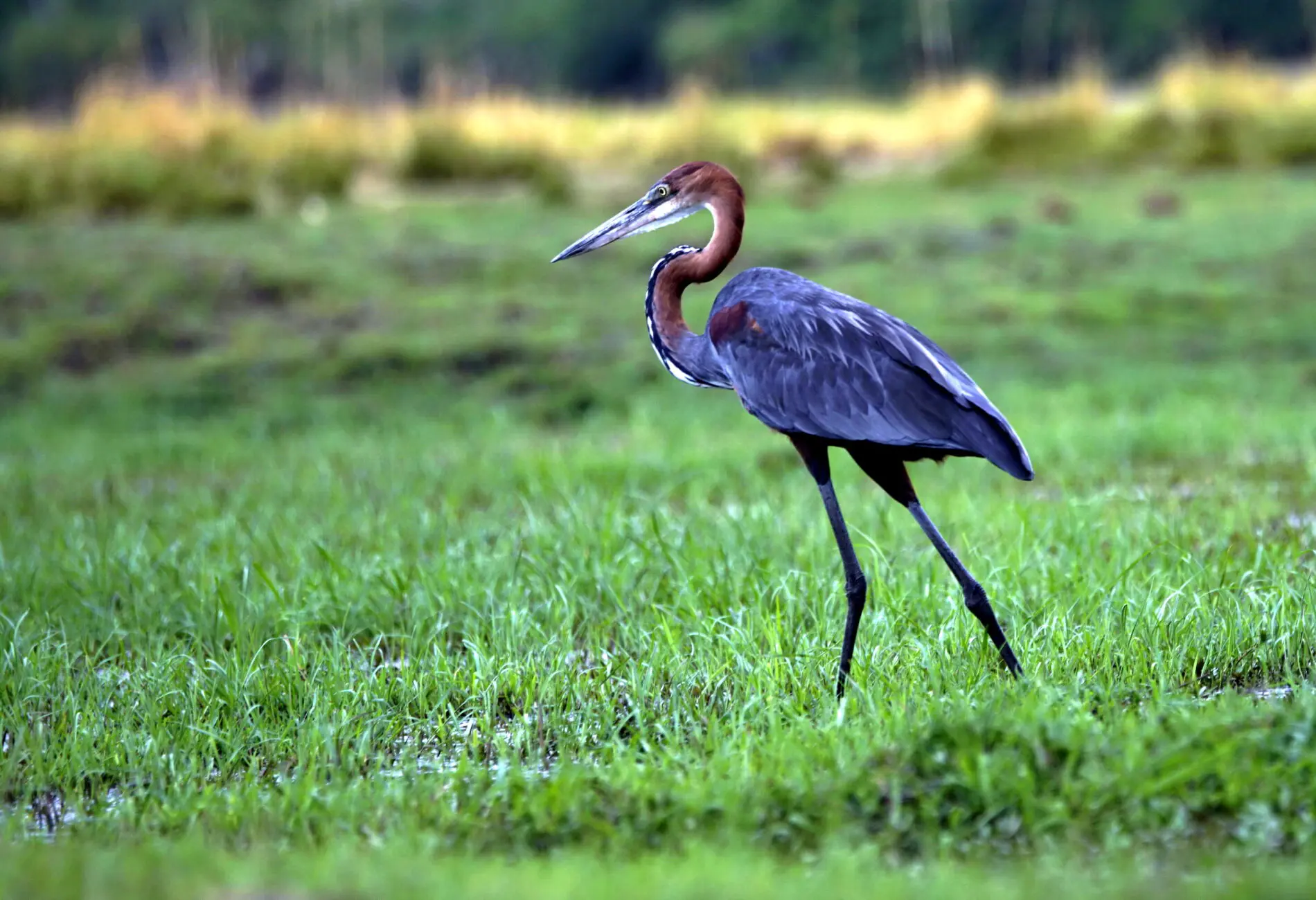
Goliath Heron
This magnificent ‘big boy’ is named the Goliath Heron for good reason. It’s the largest heron by far, reaching up to around 140cm in height. You’ll spot this solitary hunter on its own, wading in the shallows looking for prey and watching out for its competitor, the Fish Eagle, who’ll try steal its dinner. But be warned Fish Eagles: the beak of this Goliath is long and very, very sharp!
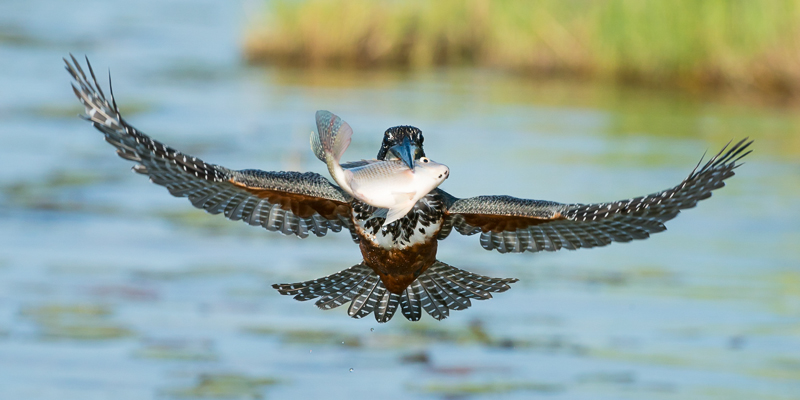
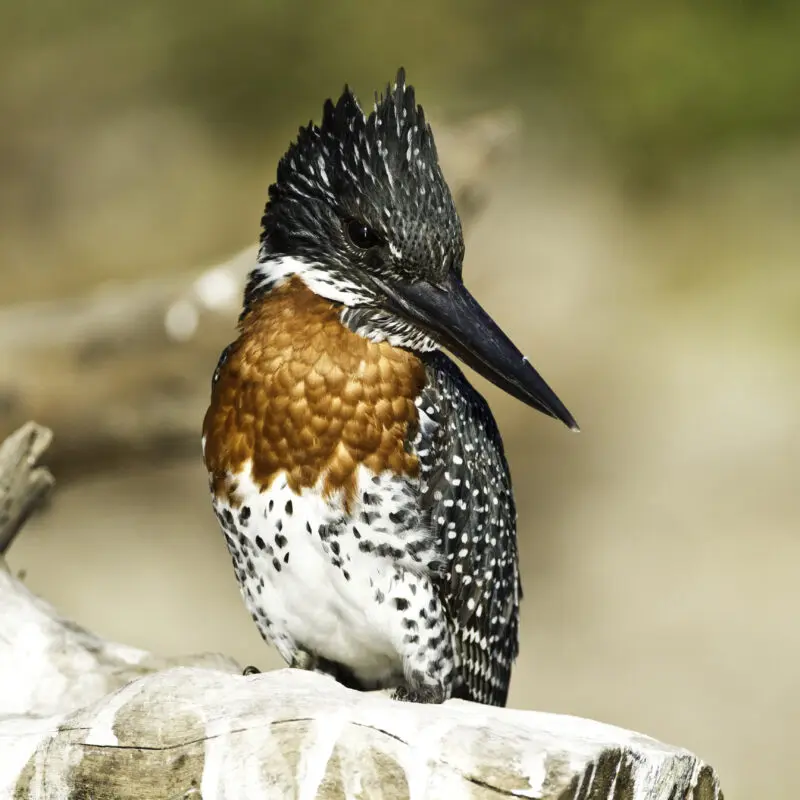
Giant Kingfisher
The Giant Kingfisher is a rather interesting bird to behold. One could say its appearance is most unique! Its mottled black and white feathered ‘overcoat’ gives it the appearance of a rather prickly porcupine. They’re rather partial to a quick swim to cool off, followed by a suntanning and preening session.
Fun fact: Giant Kingfishers are termed sexually dimorphic. This means that the males and females have different plumage. Males have a brown chest while the females have a brown stomach. Kingfishers also hunt at midday so marvellously, they are able to easily see through glare on the water’s surface to make quick work of unsuspecting underwater prey.
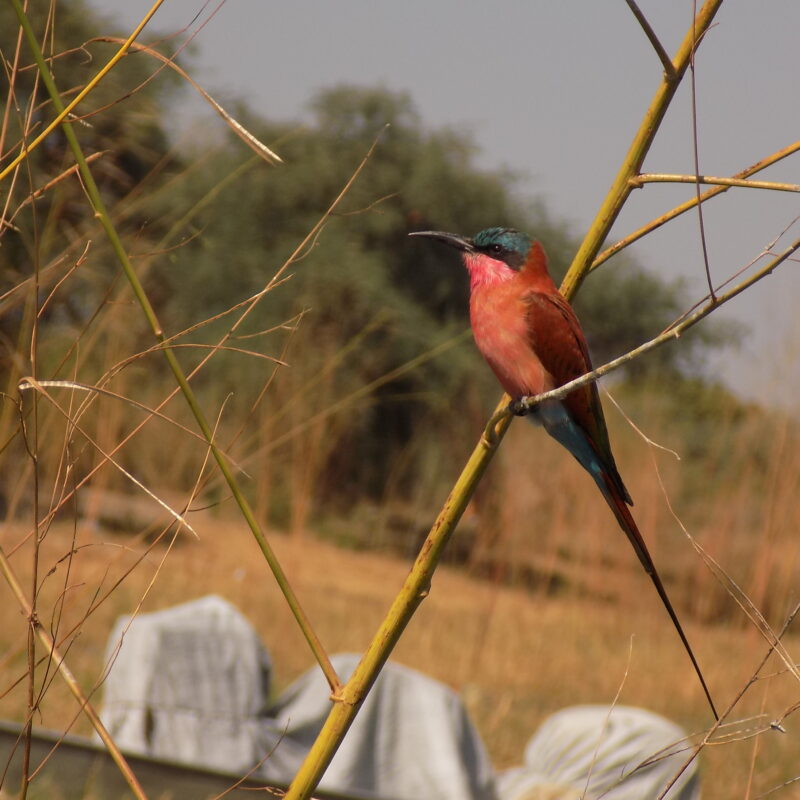
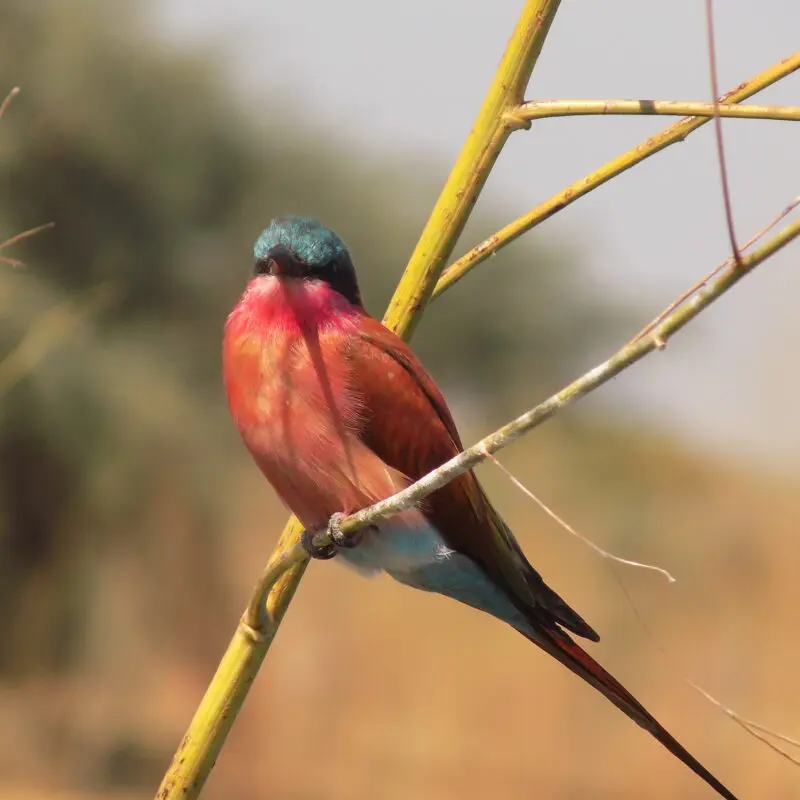
Southern Carmine Bee Eater
Well, isn’t she a beauty! Perhaps one of the most striking birds you’ll ever spot, the Southern Carmine Bee Eater is all coral pink and bright blue feathers, elegantly long tail and black bill. Watch them catching their prey (butterflies and other flying insects) or swooping off after enjoying a quick dip in the river.
Top tip: Follow the noise! These chatty “Kathys” are often spotted in crowds (aka flocks even up to a hundred). They love nothing more than a good natter in the midday sun.
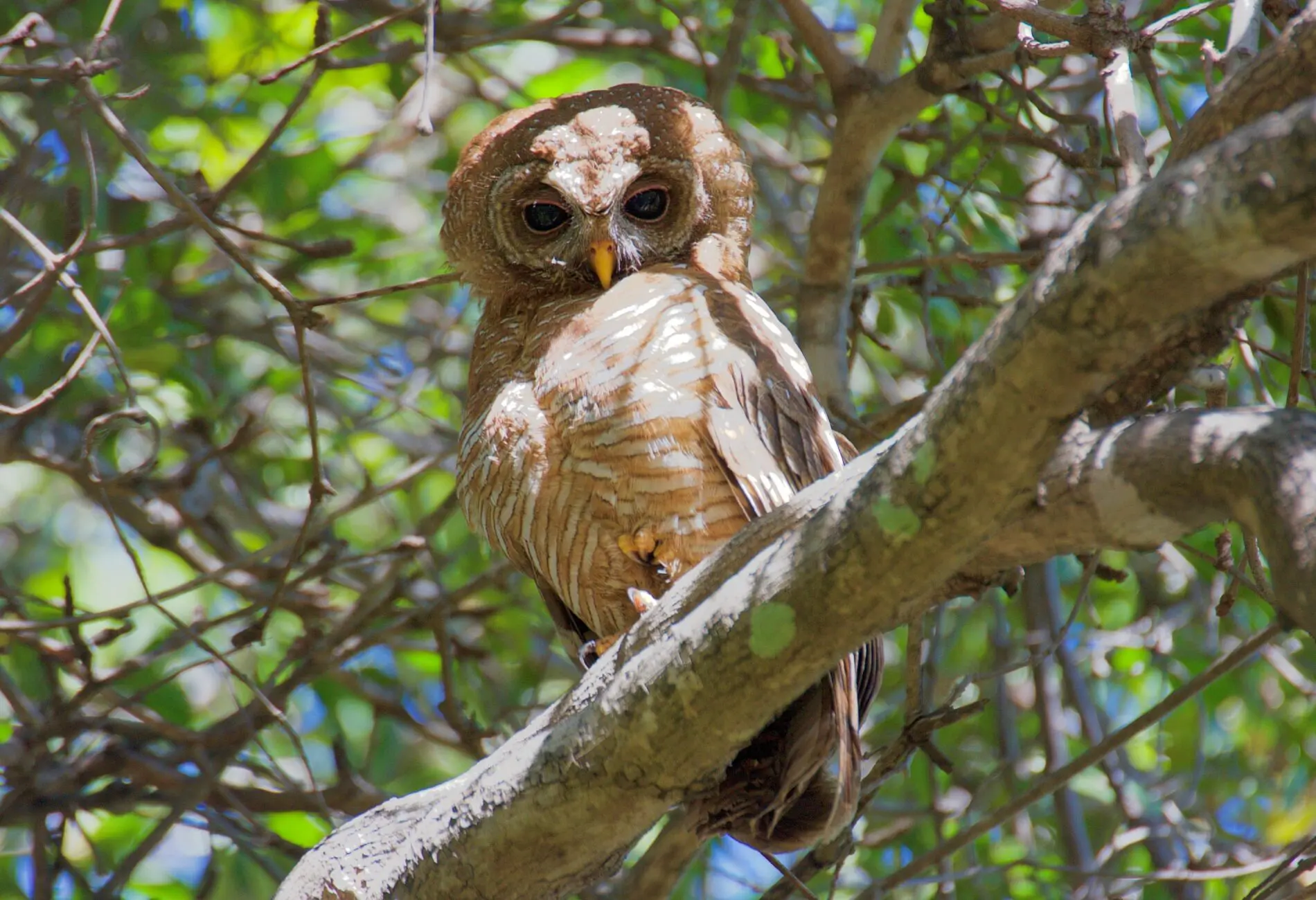
African Wood Owl
Come nightfall, listen for the soothing sound of the African Wood Owl’s duet. Males and females croon to each other after dusk, after roosting all day. The African Wood Own is the most common owl in sub Saharan Africa but still, hearing or spotting one, will definitely make your day – and photo gallery!
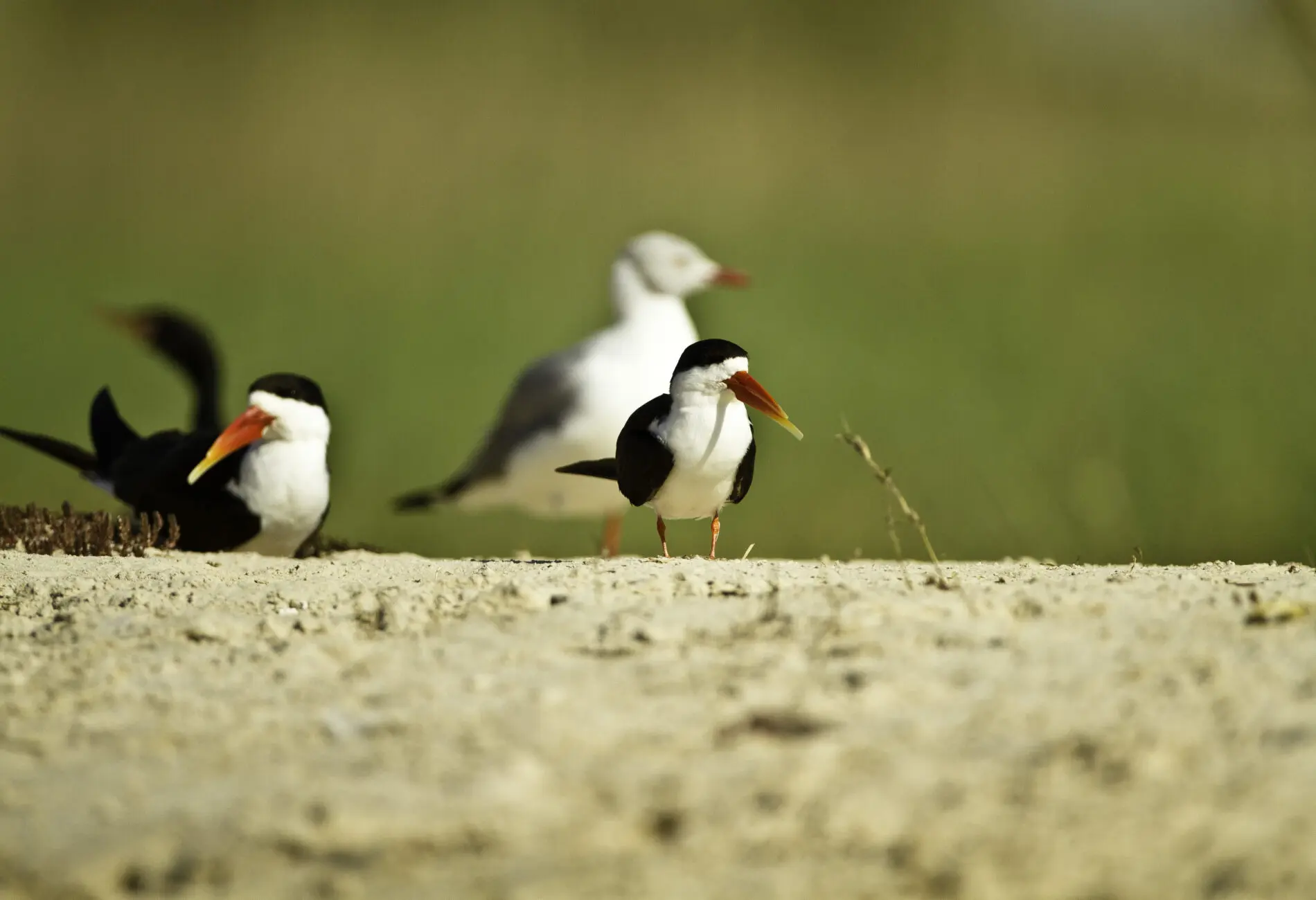
African Skimmer
Like the African Fish Eagle, African Skimmers are part and parcel of the Chobe River experience. Seeing their large red-orange-yellowy bills dip below the water in search of underwater prey as they skim the surface of the water (often in family groups) is to see them at their most elegant and graceful.
Top tip: They’re best spotted on early morning or late afternoon boat cruises.
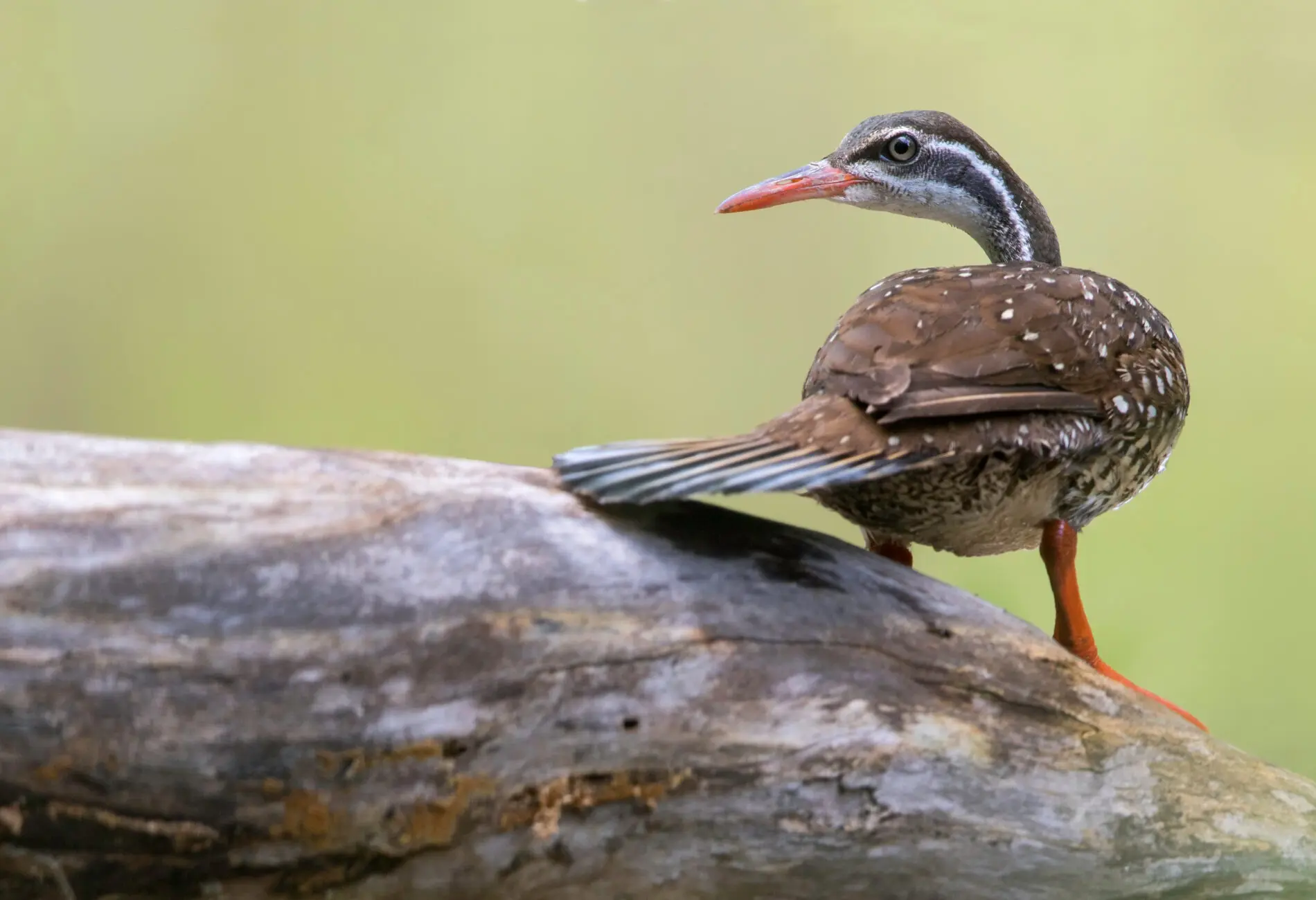
African Finfoot
The African Finfoot (classified as endangered in Namibia) is found in northern Namibia and Botswana, the north and southeast of South Africa, and Zimbabwe. With a population estimated to be less than one hundred birds in Namibia, spotting this famous yet secretive wetlands bird is one for the birding bucket list. Spot them in pairs nesting or roosting in branches overhanging the river. Human pressures have impacted their environments so there is a call for more rivers and areas to be designated protected sites.
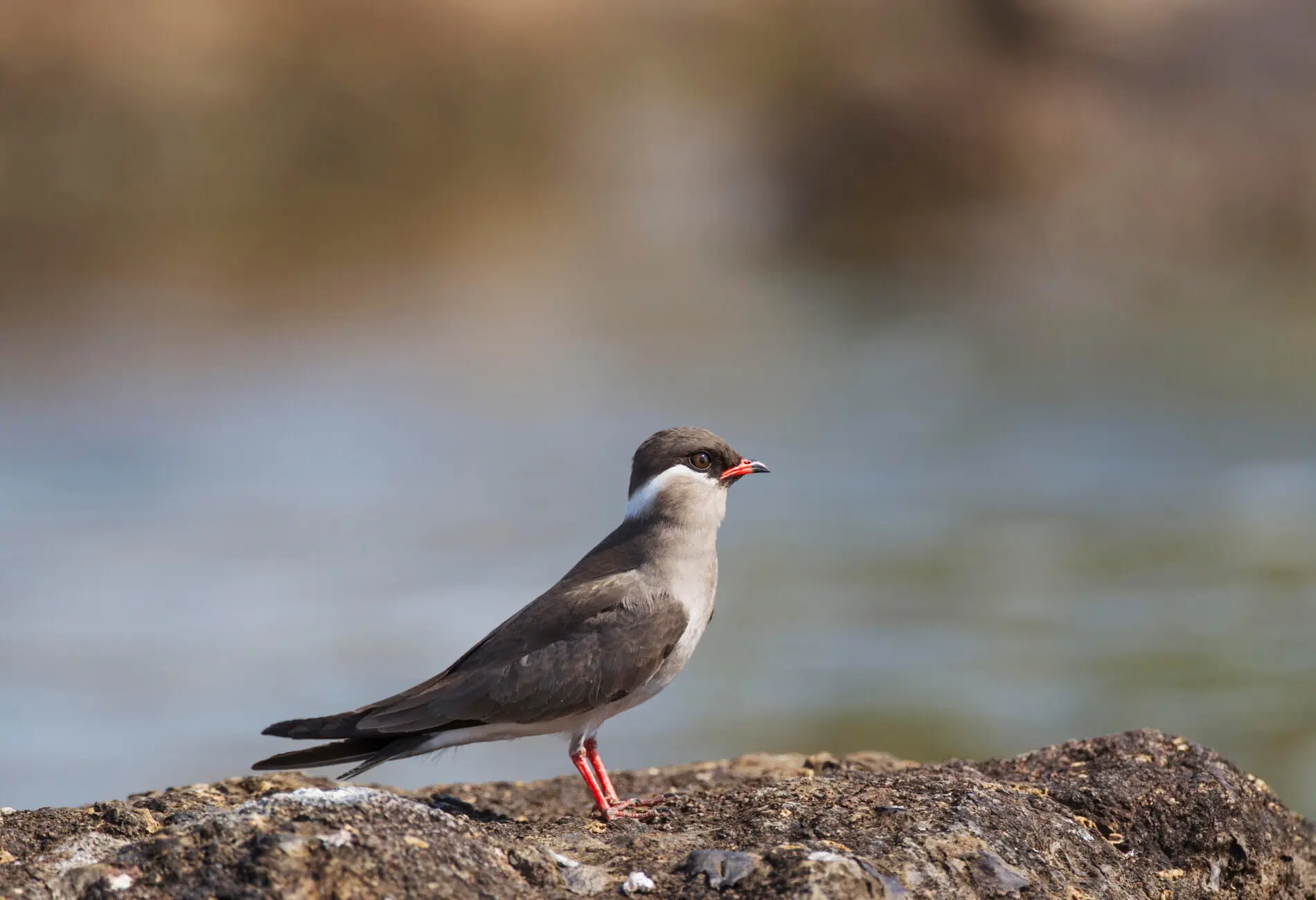
Rock Pratincoles
Rock Pratincoles may be lifers (Definition: A lifer in birding is a bird that a person has successfully sighted and identified for the first time in their life) for many birders, but here in the Chobe, they’re aplenty – but still very special. These little furry birds can be found sunbathing on rocks jutting out from fast flowing sections of the river, often spotted from September to January. They don’t like getting wet so when the rocks are submerged, you’re out of luck. In the Chobe River, they’re partial to the spot of rocks near the Seboba rapids. Watch them in flight and marvel at their easy grace – stunning!
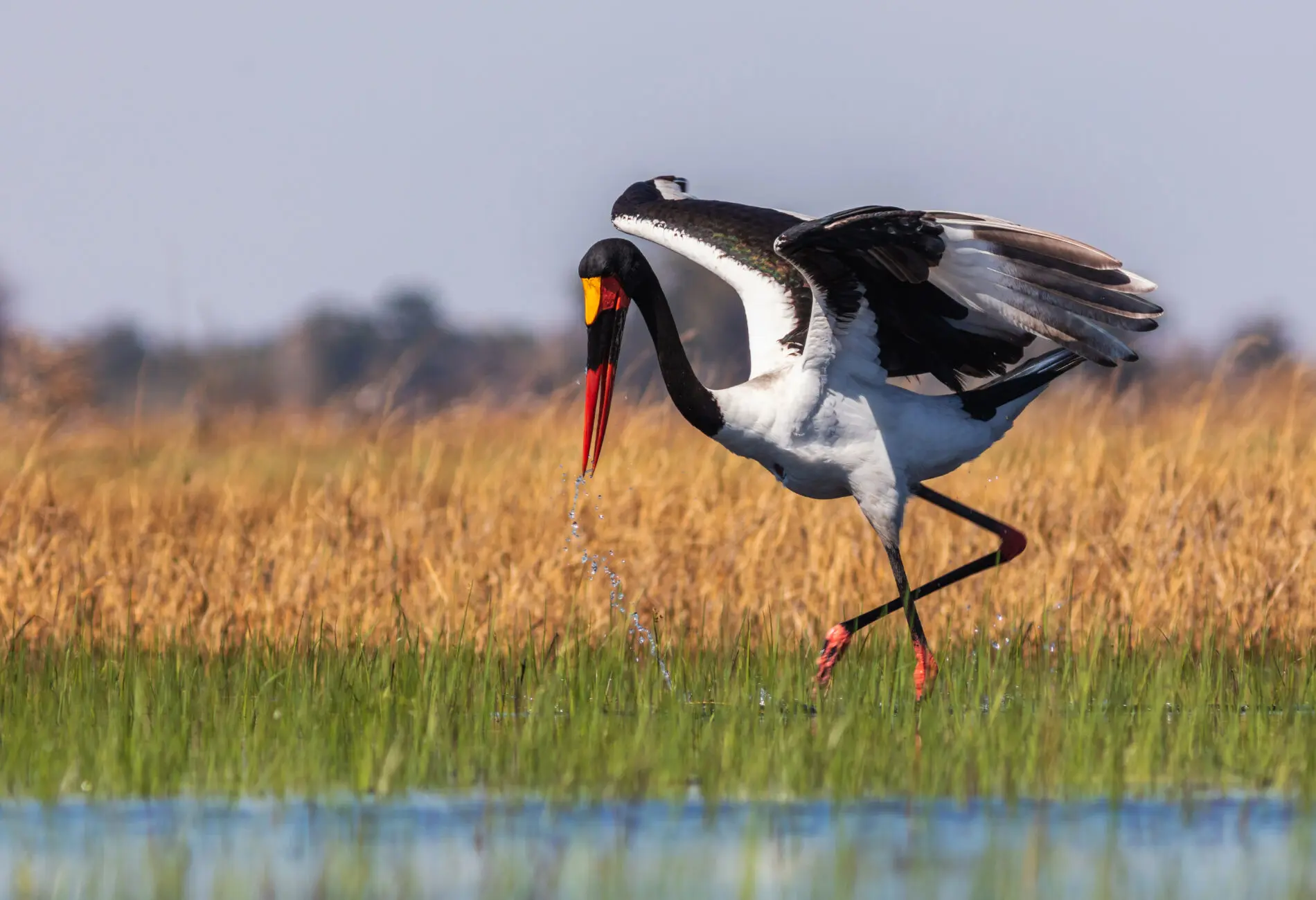
Saddle-billed Stork
The Saddle-Billed Stork has a claim to fame as the world’s tallest stork (they can reach 1.5 metres tall!) and is a stunning waterbird to behold with its black and white body and red bill. They’re most often spotted alone or in pairs.
With over 450 birds to choose from, narrowing down a top ten list is challenging. Other honourable Chobe mentions include the:
- White-backed Vulture
- Coppery-tailed Coucal (chances are that’s the call you’re hearing!)
- Long-toed Lapwing
- Pennant-winged Nightjar
- Rosy-throated Longclaw
- Collared Palm Thrush
- Southern Ground Hornbill
